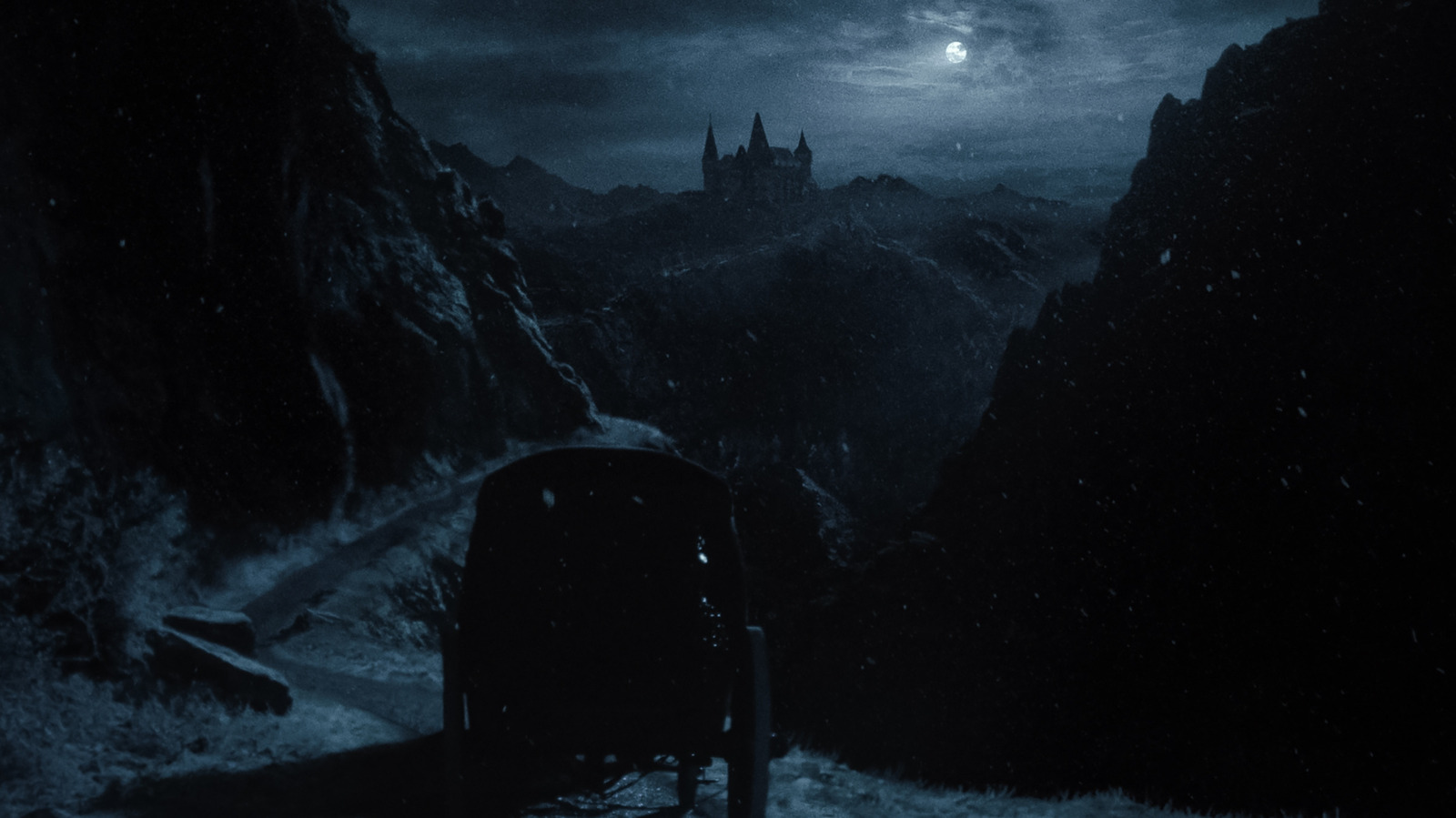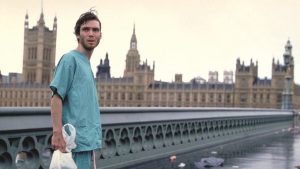
A carriage approaches Orlok’s castle in director Robert Eggers’ NOSFERATU, a Focus Features release.
Credit: Courtesy of Focus Features / © 2024 FOCUS FEATURES LLC
The Terrifying Truth About Robert Eggers’ Nosferatu Is Not What You Might Anticipate
By Bill Bria Dec. 25, 2024 6:00 pm EST
This article contains mild spoilers for “Nosferatu.”
When it comes to Robert Eggers’ recent adaptation of “Nosferatu,” familiarity can breed both comfort and unease. For those well-versed in the world of Dracula, the vampire genre, or Eggers’ distinctive directorial touch, many elements of the film may feel expected. Graphic depictions of bloodshed, an intense atmosphere of dread, a meticulous attention to historical accuracy, and a complicated psychosexual dynamic between the vampire Count Orlok, played by Bill Skarsgård, and his prey are all hallmarks that avid viewers can anticipate. Nevertheless, the beauty of engaging with the vision of a genuine auteur lies in finding surprises in their signature style.
“Nosferatu” possesses Eggers’ unmistakable flair, while simultaneously embodying the essence of a classic vampire film. What is truly astounding is how refreshing and vibrant it feels, particularly in an era saturated with vampire narratives. The fervor with which Eggers tackles this material is breathtaking, especially considering the challenges of making the vampire genre terrifying once more in contemporary pop culture. The answer, undoubtedly, hinges on his mastery of craft and presentation—two areas in which Eggers excels. The meticulous framing of Skarsgård’s performance, along with a range of innovative filmmaking techniques, coalesce to transform “Nosferatu” into one of the most chilling entries in the vampire canon.
Skarsgård and Eggers Navigate the Uncanny Valley
One of the most intriguing elements of “Nosferatu” is the portrayal of Skarsgård’s Count Orlok. This interpretation stays true to the legacy of the 1922 classic directed by F.W. Murnau, which featured Max Schreck as Orlok, and still manages to evoke a potent sense of creepiness. Eggers elaborated on their approach, revealing how he and his team—including costume designer Linda Muir and makeup artist David White—crafted an Orlok with a “folk vampire look.” This marks Orlok as a grotesque figure, blending the otherworldly and the everyday in a way that feels disturbingly relatable.
Skarsgård’s transformative performance is elevated by substantial character work, including collaboration with an opera coach to deepen his vocal timbre. The result is an unsettling presence that makes viewers question their recognition of the actor, thrusting them into an uncanny emotional terrain.
Eggers’ Camera Keeps You in the Nightmare
Eggers employs a striking visual language in “Nosferatu,” using lengthy shots that immerse viewers into the narrative. Even casual viewers will immediately notice how these unbroken takes evoke a psychological exploration of Orlok’s impact on the human mind. This approach draws parallels to the dreamlike horror of Wes Craven’s “A Nightmare on Elm Street,” where the boundaries of dreams and reality blur.
Through deliberate choices in shot composition and movement, Eggers invites audiences to experience this waking nightmare alongside his protagonists. The collaborative efforts of the camera and lighting teams are crucial in achieving this vision, further enhancing the film’s immersive qualities.
Color Without Color in Nosferatu
While “Nosferatu” is shot in color, the visual palette is largely monochromatic, serving multiple narrative purposes. This design choice creates an atmosphere steeped in the past, echoing the classic Murnau film while adding depth to character experiences, particularly Ellen, portrayed by Lily-Rose Depp.
The visual palette accentuates the film’s uncanny aspects, playing tricks on viewers’ perceptions. This subtle manipulation promotes an unsettling dream-like state as we navigate our recollections of the film. Eggers skillfully marries genre conventions like dramatic music cues, jump scares, and visceral sound design with finely tuned subtleties that linger long after the typical fright fades away. This creates a rich, layered experience that invites repeated viewings, with an unsettling narrative that resonates throughout.
As the film unfolds, the sparing use of daylight becomes significant, highlighting the only force capable of overcoming Orlok—the sun itself. Until the film approaches its conclusion, the audience is left enveloped in darkness, with candlelight failing to dispel the encroaching gloom.
Ultimately, Eggers’ “Nosferatu” stands as a masterful fusion of craft, atmosphere, and thematic complexity, making it a memorable and haunting experience that continues to resonate with viewers both on first viewing and through repeated explorations.





